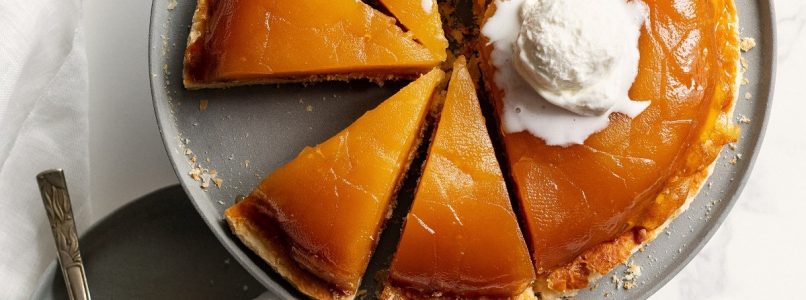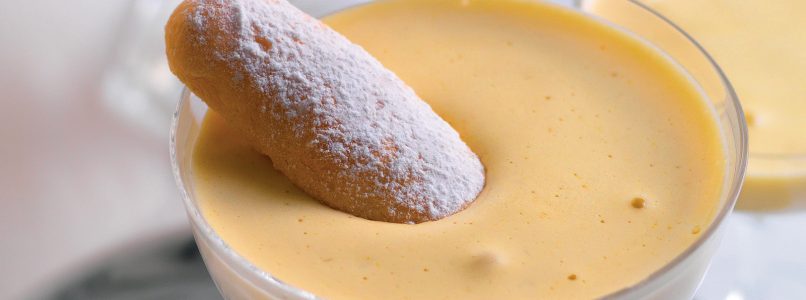Inverted cake with ladyfingers, preparation
For the caramel: 120 g of granulated sugar
For the apple filling: 6 Golden apples – 35 g of sugar – 35 g of butter – 1 lemon – 1 vanilla pod
For the base: 2 discs of puff pastry – 1 egg white – 2 tablespoons of icing sugar – 3 soft ladyfingers
1) Prepare the caramel by dissolving the sugar in a thick-bottomed saucepan over medium heat. When it will be just golden pour it in a 22 cm diameter mold distributing it even on the edges and let it harden.
2) For the apple filling, prepared a syrup by dissolving the sugar over low heat with 35 ml of water and 2 tablespoons of lemon juice together with the seeds taken from the vanilla pod; unite the butter and let it melt.
3) Peel apples and cut them into very thin slices (1-2 mm), possibly using a mandolin. Fix the apple slices in the prepared mold starting from the edge e overlapping them slightly.
4) Warm up the syrup e pour it on apples, lifting the slices with the tip of a knife for make it penetrate well between the layers.
3 Bake at 180 degrees for about 90 minutes (check if the apples are well cooked, skewer them with the blade of a sharp knife that will have to penetrate without effort).
5) Remove from fornor and let cool; then transferred in the fridge all night.
6) For the base, overlap the two discs of puff pastry after having brushed the edges with a little egg white in order to seal them. Fix the disc on a plate lined with baking paper, prick it with a fork e sprinkle it with icing sugar.
7) Cover with a sheet of baking paper and a cake pan so that the dough does not swell too much during cooking e cook in the oven at 200 ° for 25 minutes. Remove from the oven the pastry base, let it cool and trim the edge with a serrated knife; in the end transfer it on a serving plate e sprinkle the surface with crumbled ladyfingers.
8) Pull out of the fridge the mold with apples, immerse it for a few moments in a pan with very hot water and turn it upside down on the pastry base. Let it sit the dessert for at least half an hour before serving, accompanying him, to taste, with fiordilatte ice cream.


 The origins
The origins